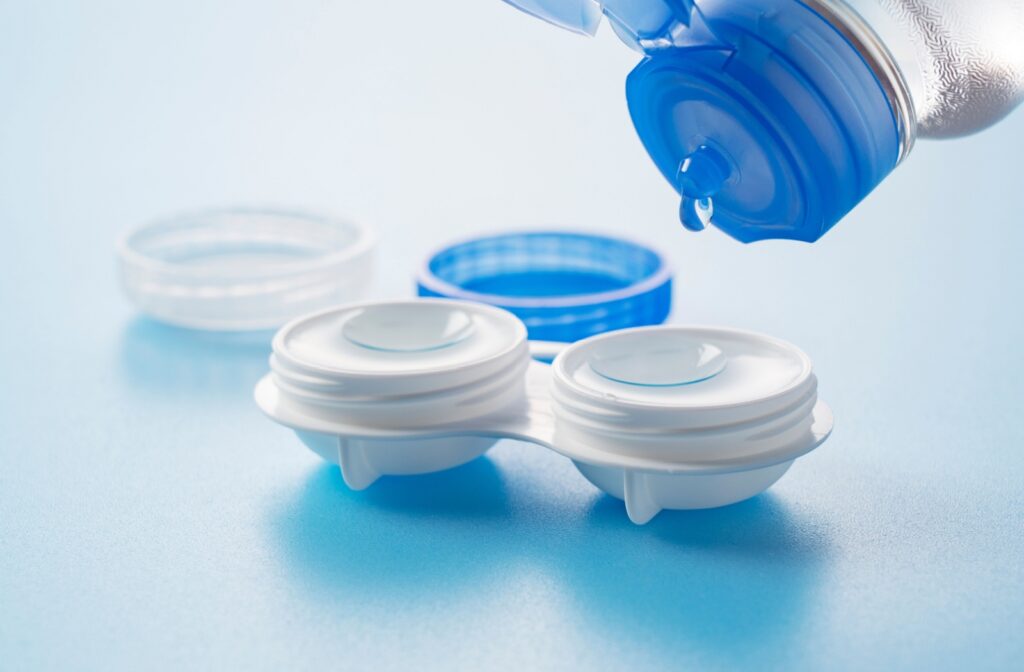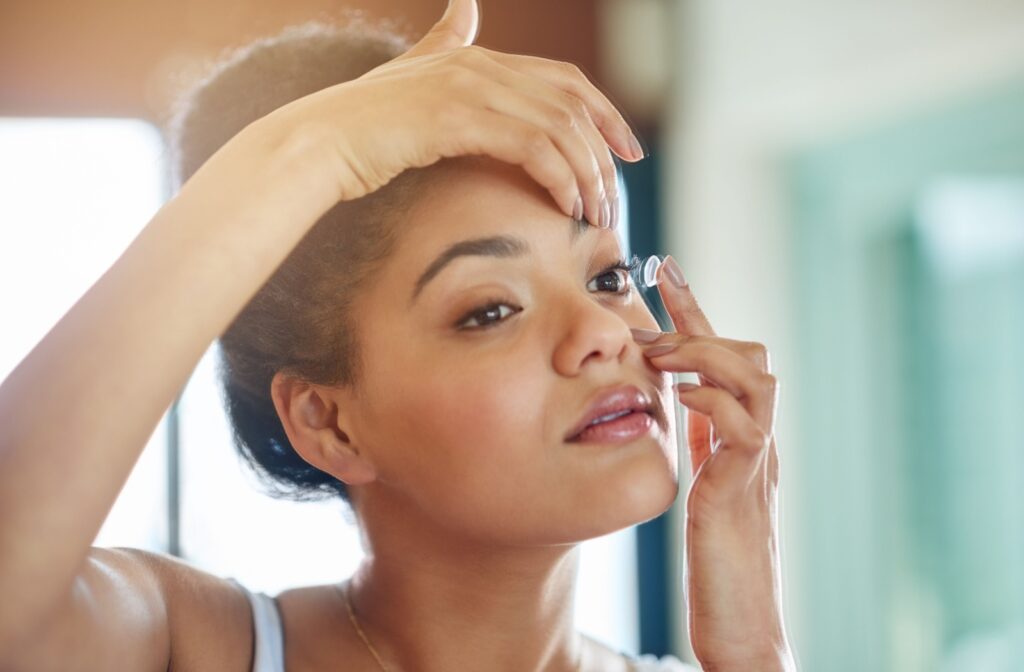Contact lenses have long been a popular choice for people seeking an alternative to glasses. They offer convenience, versatility, and a more natural field of vision. However, as convenient as they are, contact lenses aren’t a one-time purchase—they must be replaced regularly to maintain both eye health and comfort.
If you’re wondering, “How long do contact lenses last?” It can depend on a few factors that determine lens longevity, care instructions, and why replacing them on schedule is crucial for vision care.
Types of Contact Lenses & Their Durability
Different types of contact lenses come with different lifespans. The type of lens you wear directly impacts how long they can last and the level of care they require. Here’s a breakdown of the most common types:
1. Daily Disposable Lenses
Daily disposables are meant for single use only. You wear them for a day and throw them away before going to bed. These lenses are convenient because they don’t require cleaning or storage, making them perfect for people with busy lifestyles. However, their durability is extremely short—just 24 hours.
2. Weekly or Bi-Weekly Lenses
These lenses are designed for use over one to two weeks. They must be removed, cleaned, and stored overnight in a contact lens solution. With proper care, weekly lenses can provide great comfort and vision for their intended lifespan. However, stretching their use beyond 14 days can lead to reduced clarity and increase the risk of eye infections.
3. Monthly Lenses
Monthly lenses can last up to 30 days with proper care and cleaning. Like bi-weekly lenses, they’re reusable, but they’re designed with more durable materials to withstand daily wear over a longer period. It’s crucial that they’re cleaned nightly and replaced promptly after a month of use. Overusing monthly lenses can lead to bacterial buildup and compromise eye health.
4. Extended Wear Lenses
Approved for continuous wear, extended wear lenses allow day and night use for up to seven days without removal. Some brands even allow 30 days of continuous wear, though this depends on your eyes’ tolerance and an optometrist’s approval. Keep in mind that wearing lenses for so long without cleaning increases the risk of complications like dryness or infections, so eye health monitoring is essential.
5. Rigid Gas Permeable (RGP) Lenses
RGP lenses are durable and often last for six months to a year. Their lifespan is longer because they’re made from sturdy materials that allow oxygen to pass through while resisting deposits. However, they require consistent cleaning and care to maintain their effectiveness.

Why You Should Replace Contact Lenses On Time
It might be tempting to use your contacts longer than their recommended lifespan, especially if they still feel comfortable. But extending their use can have serious consequences for your eye health and vision care. Here’s why timely replacement is vital:
- Prevent eye infections: Over time, lenses develop protein and oil deposits that create a breeding ground for bacteria. These deposits can lead to infections, such as keratitis, which may require medical intervention.
- Ensure optimal vision: Worn-out lenses may warp or become cloudy, leading to blurred or distorted vision. Replacing them ensures your lenses continue to provide the clear, sharp vision they’re designed for.
- Protect eye health: Old or overused lenses can irritate the eyes and cause discomfort, redness, dryness, or even corneal damage.
- Maintain comfort: As lenses age, they lose their ability to maintain moisture, which can lead to dryness and irritation, reducing comfort.
Tips to Maximize Contact Lens Durability
To get the most out of your contact lenses while protecting your eye health, follow these key tips:
- Follow wear schedules: Always stick to the replacement schedule recommended by your eye care provider, whether daily, bi-weekly, monthly, or otherwise.
- Adhere to cleaning practices: Clean them with a doctor-recommended solution to remove deposits and bacteria. Avoid using water or saliva, as these can introduce harmful microbes.
- Store lenses properly: Store your lenses in a clean, disinfected case with fresh solution. Replace the case every 1-3 months to prevent contamination.
- Avoid sleeping with contacts (unless they’re designed for extended wear): Sleeping with contact lenses can dramatically reduce oxygen flow to your eyes, leading to dryness, discomfort, and potential infections.
- Schedule regular eye exams: Routine visits to your optometrist will help monitor your eye health and ensure optimal lens wear.
What to Do When It’s Time for a Change
If your contact lenses are nearing the end of their recommended lifespan, don’t delay in replacing them. Using old or damaged contacts negates the benefits of wearing lenses, such as clear vision and comfort, and can put your eye health at risk.
Find a Pair of Contact Lenses for You
The lifespan of your contact lenses depends on the type you wear and how well you care for them. Following the recommended replacement schedules and maintaining good hygiene are key to ensuring comfort, clarity, and healthy eyes. Whether you’re using daily disposables, monthly lenses, or rigid gas permeable contacts, proper care is non-negotiable.
Taking care of your lenses means taking care of your eyes. For personalized care, expert fittings, and a complete range of contact lens options, visit Dr. Goldstone Vision Center in Fountain Valley, CA. Book your appointment here and discover exceptional eye care you can trust!



